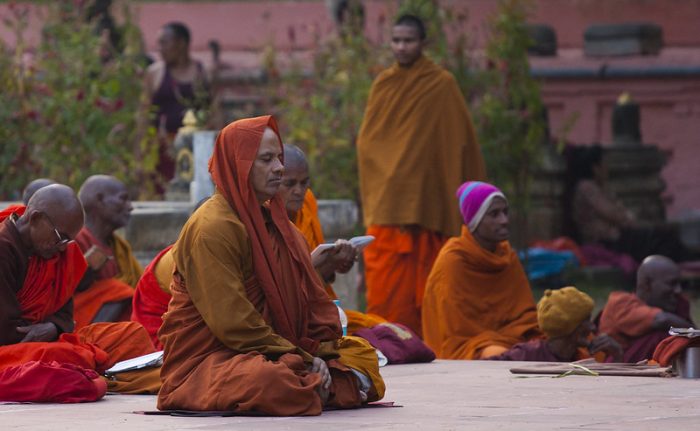What is Meditation?
Dharma people tend to think they know what meditation is, while ordinary people think they don’t.
The only difference between the two is that one attaches a word “meditation” to the activity of meditating, and one doesn’t. Because the “dharma person” defines meditation, he is enabled to contextualize and identify ordinary thinking and further develop it into genuine meditation. So, it boils down to the fact that “dharma people” and ordinary people meditate, but the meditator just does what ordinary people do in a way that generates increasing awareness.
The point of the longwinded above paragraph is to point out that meditation is a natural state of awareness and something we cannot avoid even if we wanted to. Meditation is innate in every human being, just like breathing is. In fact, many yoga and meditation texts point out just that fact: when the breath slows, thought slows, when thought slows, breath slows. As surely as we breathe, we meditate. The only difference is that breath is more obvious. Everyone will agree that they breathe, but not everyone will agree that they meditate.
To answer the question put in the title of this essay, “What is meditation,” meditation can be described as “absorbed abstraction.” We have all noticed that when we are engaged in doing something that requires our full attention our breath slows down in direct proportion to our degree of focus; in fact, we may even hold our breath for a moment to complete a task. This simple fact beautifully illustrates what we pointed out above: “when the breath slows, thought slows, when thought slows, breath slows.”
Whether we are a seasoned meditator or thinking about trying meditation, understanding the relationship of breath and thought is essential. This brings us to a crucial point. While breath and thought are intricately linked, as far as the “Path” to realization goes, we are advised to choose between breath mastery or thought mastery as our primary discipline, although we can practice both. “Breath mastery” is called pranayama, while “thought mastery” is meditation. The two merge at some point, but until that times comes, we should choose one or the other.
One of the things I like about pranayama is that it is so natural and always available. We breathe; there is no denying that. Unlike thoughts which are forever changing, breath is a stable reference when used as a topic of meditation. We never think of our breath as it flows and sustains our physical body, but if we choose, we can rest our awareness on it deliberately for a given period. As our awareness of breath becomes less and less distracted by thoughts, we become increasingly absorbed in our breath. It is an art that can lead to “samadhi,” breathlessness, or I like to say, “absorbed abstraction.”
Meditation, whose focus is thought rather than breath, is a different approach to the same end (where both practices merge). We all think as surely as we all breathe, but unlike our inhaling breaths and our exhaling breaths, which are all the same, thoughts vary greatly. Though thoughts are of every variety, they all arise from the same source. Finding that source is meditation. Between each thought there is a gap, and the aim of meditation is increasing the gap. The gap is not noticeable most of the time, but if we sit quietly and allow our thoughts to rise and fall without our interference, we will notice the gap between our thoughts.
There are many meditation techniques dealing with thought just as there are dealing with breath. Choose one and stay with it without wavering. Learn to be increasingly aware of the gap between thoughts. It is that bare awareness, without any elaboration, which increases the gap until you eventually fall into it. That is samadhi, absorbed abstraction.
We are all born meditators. It is the nature of the mind to be aware. Fortunately, there were awareness pioneers who decided to explore awareness itself and see if there is more to awareness than what was apparent.
Because they succeeded, we have the “Path” to do the same. Put your best foot forward.
~









Read 0 comments and reply